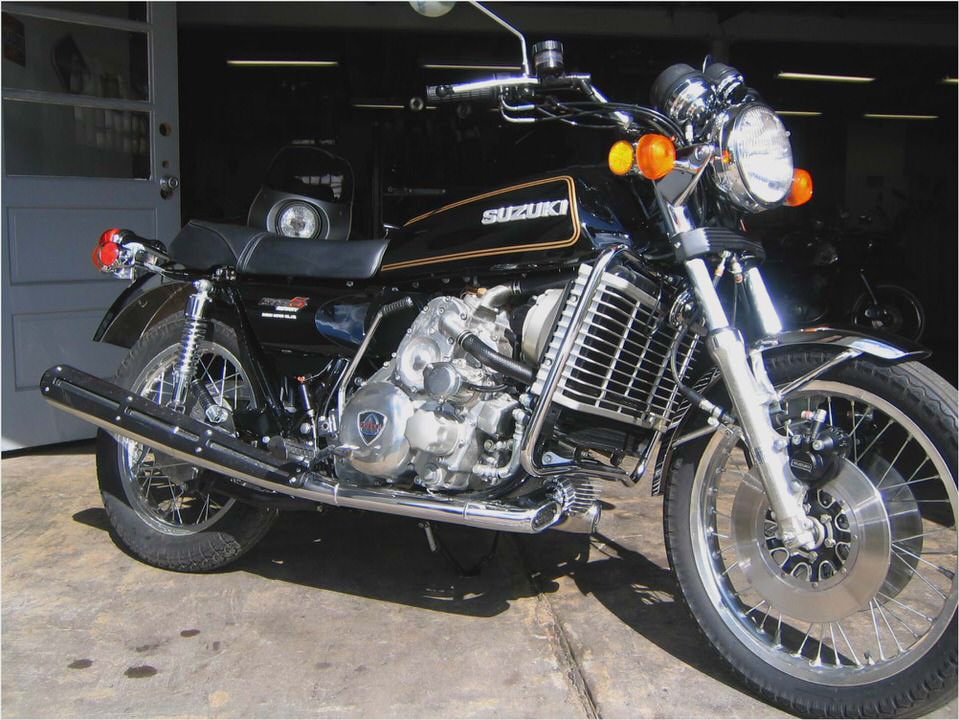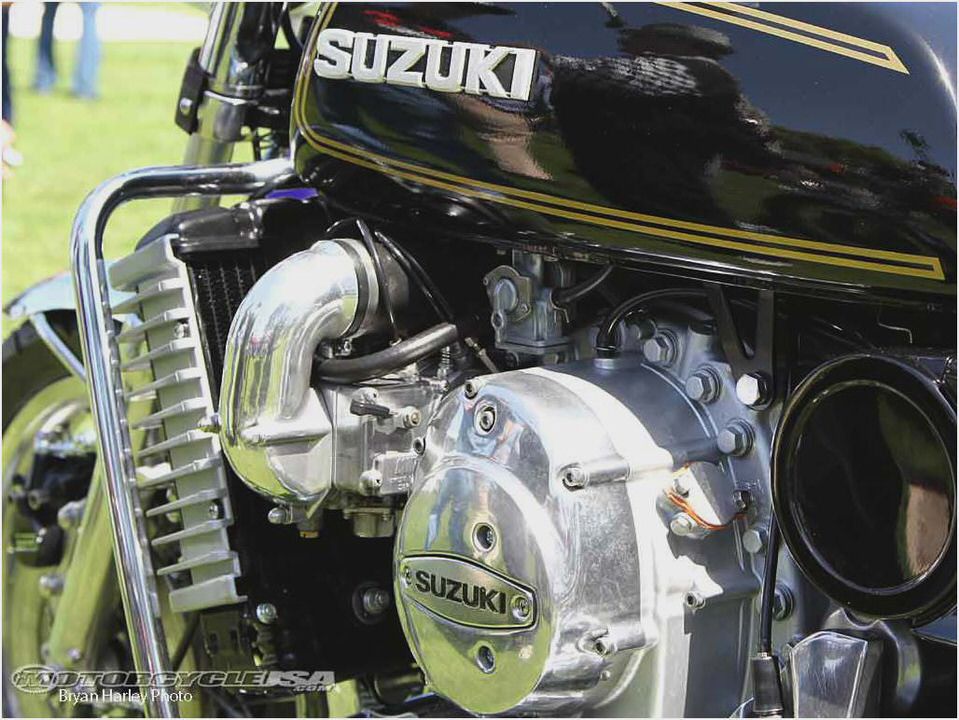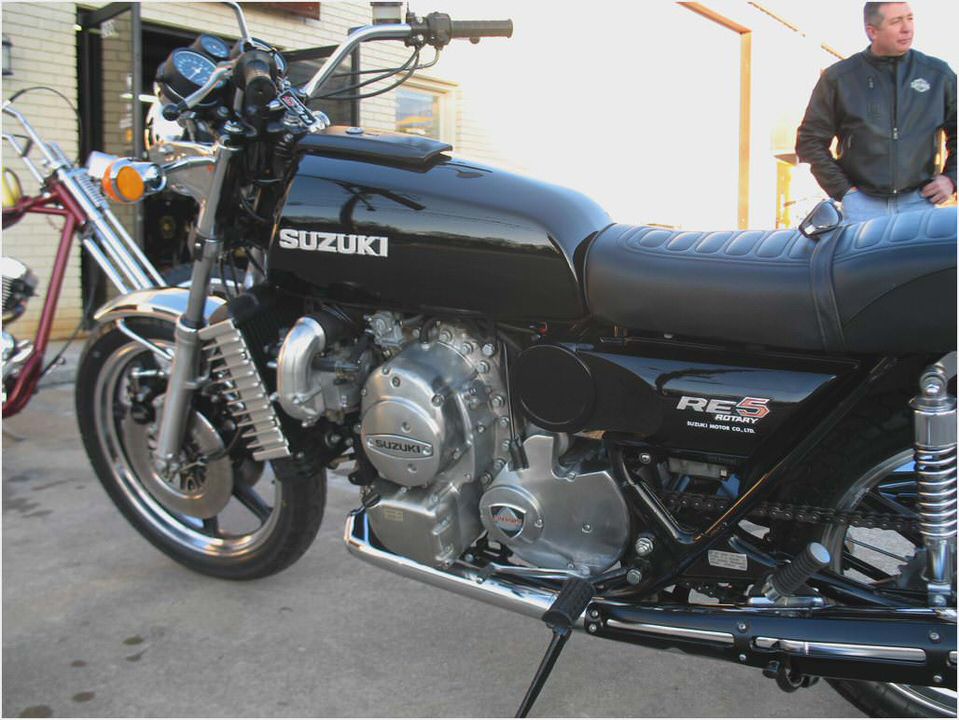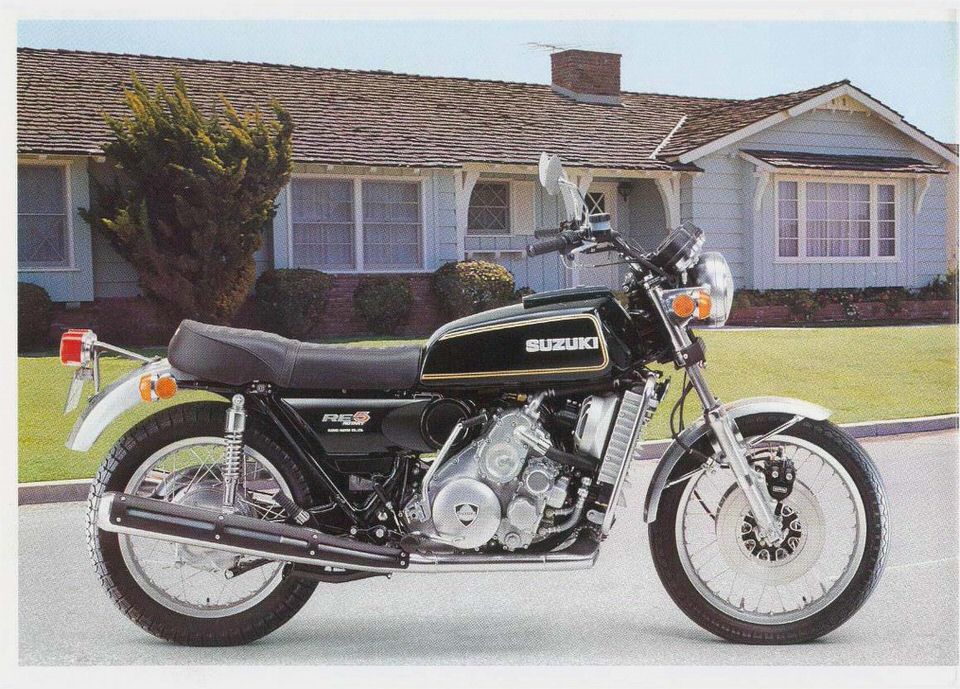A touring machine for the new age
Feature Article from Hemmings Motor News
Compact, light, smooth-operating, and powerful for its size, the Wankel rotary was theoretically the perfect engine for a motorcycle. While Hercules and Norton adapted existing rotaries into the frame rails of their motorbikes, it was Suzuki that not only designed a rotary engine specifically for use in their RE-5 motorcycle, but also constructed manufacturing facilities to build thousands of smooth-running two-wheel touring machines. Giorgetto Giugiaro, of Ferrari 250GT fame, was hired to design the bike, which held the promise of a modern engine and an effortless motorcycling experience of the future for about $2,500.
The motorcycle and rotary would come together in the RE-5, but not without hurdles. Suzuki overcame challenges in cooling the engine, and kept apex seal wear at a minimum. Hardened rotor housing plating stopped excessive wear and chatter marks that haunted others on the path to a consumer-friendly rotary. Once chatter marks grooved the rotor housing, apex seals wore out that much faster. So vexing was this problem that Mazda engineers named these the nail marks of the devil.
Suzuki developed a unique material for their apex seals, which were five millimeters wide for durability.
The RE-5 was primarily water-cooled, with help from a small oil cooler. While the radiator may loom large on a 500cc bike, the plan was to engineer robust systems for later two-rotor versions. A secondary oiling system was the secret to the survival of the 62-horsepower rotary.
The system fed metered bursts of oil through the single carburetor to lubricate the apex seals. Further cooling of the engine was achieved through the exhaust. Intake vents mounted on the front of the dual-wall pipes channeled air over the inner pipe to bring down engine operating temperatures and keep noise at pleasing levels.
A second rotor could have doubled the horsepower, yet added just two inches of width.


Suzuki RE-5 specialist Jess Stockwell says the bad reputation of the RE-5 is ungrounded. The Suzuki rotary can spin up to 100,000 miles with proper care and attention paid to the secondary oiling system and carburetor. With five control cables and 14 jets, a fusty carburetor is what usually sidelines the RE-5. Running the secondary oiling system dry will roast the rotary.
Current prices for this unique production motorcycle vary wildly, with excellent-condition bikes fetching high teens, and functional riders for about half of that or less. Only around 6,300 RE-5s were produced; 300 are at Jeff’s shop, with probably less than half of the total production number still turning their rotors.
RE-5 sales were soft, despite the modern approach and engineering. The rotary-inspired Giugiaro cylindrical gauge housings and taillamp shapes were later replaced by more conventional components in an attempt to draw in Japanese standard motorcycle buyers, but it was too late for the RE-5 to achieve the greatness that had inspired its creation. The RE-5 was dropped after the 1976 model year.
Special thanks to Jess at Rotary Recycle of Tullahoma, Tennessee. Give Jeff a call at 931-841-3158 or find Rotary Recycle on the web at www.rotaryrecycle.com .
This article originally appeared in the March, 2011 issue of Hemmings Motor News.



- Scooters: buy used and new Yamaha scooters, Suzuki scooters and Honda…
- Suzuki GS500R Overlander Adventure Motorcycling Handbook
- 2004 Suzuki V-Strom 650 – Motorcycle USA
- American Suzuki Shakes Up Cruiser Market With New Suzuki Boulevard Brand;…
- 2003 Suzuki GSX-R1000 / Motoring / Web Wombat

